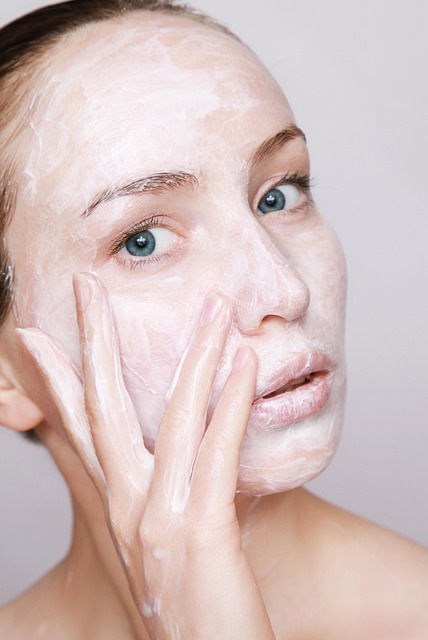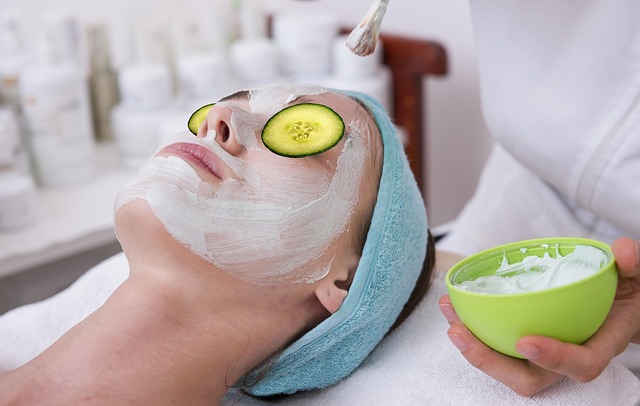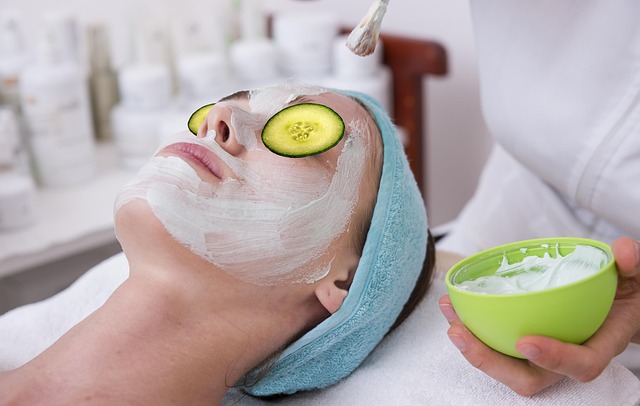Laser skin brightening, a cutting-edge non-invasive procedure, utilizes advanced laser technology to target and treat pigmentation issues, offering precise results for a brighter complexion. Modern lasers stimulate collagen production, break down pigmented spots, and address age spots, sun damage, and hyperpigmentation while minimizing impact on healthy skin. Various laser types cater to diverse needs, with Intense Pulsed Light (IPL) treating uneven tone, fractional lasers improving texture, and Q-switched Nd:YAG lasers breaking up pigmented spots. Choosing the right treatment requires consulting a dermatologist who can recommend based on skin type and concerns. Potential risks include redness, swelling, and changes in skin texture; proper aftercare is essential for optimal healing. Future advancements promise more precise, effective, and personalized laser skin treatments.
Discover the transformative power of laser skin brightening, a cutting-edge approach to achieving radiant, even skin. This comprehensive guide explores the science behind laser treatments, from how they target pigmentation to their diverse benefits. We delve into different laser types, helping you choose the best fit for your skin. Learn about potential side effects, recovery tips, and future trends, empowering you with knowledge for informed decisions regarding these popular Laser Skin Treatments.
Understanding Laser Skin Brightening: A Comprehensive Overview

Laser skin brightening, a revolutionary approach in dermatology, involves using laser technology to target and treat various skin concerns related to pigmentation. This advanced procedure has gained significant popularity due to its ability to offer precise, effective results for achieving a brighter, more even complexion. By emitting specific wavelengths of light, lasers penetrate the skin’s upper layers, stimulating collagen production and breaking down pigmented spots or uneven tones.
The process is often non-invasive, making it an appealing option for many individuals seeking Laser Skin Treatments. It can address age spots, sun damage, melasma, and post-inflammatory hyperpigmentation, providing a more uniform skin tone. Modern lasers are designed to be precise, allowing for targeted treatment while minimizing the impact on surrounding healthy skin. This comprehensive overview highlights the potential of laser skin brightening as a safe and efficient method to enhance one’s natural glow.
How Lasers Work for Skin Treatment

Lasers have emerged as a powerful tool in the realm of skin care, offering precise and effective treatments for various concerns, including skin brightening. When it comes to laser skin treatments, the technology utilizes concentrated beams of light to interact with different layers of the skin. These beams target specific pigments or structural elements, allowing for highly specialized and customized treatments.
During a laser skin treatment session, the laser emits light that is absorbed by targeted molecules in the skin, such as melanin (the pigment responsible for skin color). This absorption generates heat, which stimulates the skin’s natural healing process. As a result, it can lead to improvements in skin texture, tone, and overall appearance, making it a popular choice for those seeking radiant, even-toned complexions.
Benefits of Laser Skin Brightening Procedures

Laser skin brightening procedures offer a multitude of benefits for those seeking an even and radiant complexion. One of the key advantages is its ability to target and break up melanin, the pigment responsible for dark spots and uneven skin tone. This targeted approach ensures that only the problem areas are treated, making it an effective solution for hyperpigmentation.
Moreover, laser treatments can stimulate collagen production, which is essential for maintaining skin elasticity and a youthful appearance. As a result, many patients experience improved skin texture and a more vibrant, glowing skin finish. Laser skin treatments are also non-invasive, making them a preferred choice for individuals who prefer not to undergo surgery or extensive procedures.
Different Types of Lasers Used in Skin Care

In the realm of laser skin treatments, various types of lasers are employed for different purposes, each offering unique advantages in achieving healthier and brighter skin. The most common include Intense Pulsed Light (IPL) lasers, known for their ability to target a wide range of pigment issues, from sunspots to age spots, without affecting the surrounding skin. These non-ablative lasers stimulate collagen production, improving skin texture and tone over time.
Another popular choice is the fractional laser, which works by creating tiny holes in the skin, stimulating natural healing processes that result in smoother, more even skin. This type of laser treatment is particularly effective for acne scars, fine lines, and wrinkles. Additionally, Q-switched Nd:YAG lasers are utilized for breaking up pigmented spots, while CO2 lasers, though more aggressive, are employed for severe cases of skin resurfacing, offering dramatic but long-lasting results.
Choosing the Right Laser Treatment for Your Skin Type

Choosing the right laser skin treatment depends on understanding your unique skin type and concerns. Different lasers target specific skin issues, such as pigmentation, texture, or vascular problems. For instance, intense pulsed light (IPL) is effective for uneven skin tone and sun damage, while fractional lasers stimulate collagen production for rough or scarred skin.
When selecting a laser treatment, consult a dermatologist who can assess your skin and recommend the most suitable option. They’ll consider factors like skin tone, sensitivity, and desired outcomes to ensure safety and efficacy. Customized laser treatments offer significant improvements in skin brightness, texture, and overall appearance, catering to various skin types and conditions.
Potential Side Effects and Risks to Consider

While laser skin brightening treatments offer promising results, it’s crucial to be aware of potential side effects and risks before proceeding. Common temporary issues include redness, swelling, and peeling in the treated area, which usually subside within a few days. More severe but rare complications may include changes in skin texture or pigment, especially if the laser settings are not optimized for your specific skin type. There’s also a risk of infection if proper aftercare instructions aren’t followed diligently.
Before opting for any laser skin treatment, consult with a qualified dermatologist to discuss your concerns and expectations. They can assess your skin condition, advise on suitable laser technology, and guide you on minimizing risks. Remember that each individual’s experience may vary, and understanding these potential outcomes is an essential step in making informed decisions about your skin care journey involving Laser Skin Treatments.
Recovery and Aftercare Tips for Laser Skin Treatments

After a laser skin treatment, it’s crucial to allow your skin time to recover. This usually involves adhering to specific aftercare instructions provided by your dermatologist or skincare professional. One common recommendation is to avoid direct sunlight and always use sunscreen during the recovery period. Additionally, steer clear of makeup, lotions, and other products that might irritate the treated area until it heals completely.
Hydration is key; gently cleanse your skin twice daily with a mild cleanser and apply a soothing moisturizer. Avoid using exfoliating or aggressive products as this can cause further irritation. Remember, each laser treatment is unique, so follow the tailored advice from your healthcare provider. They might suggest specific products or routines to enhance recovery and maintain optimal results from your Laser Skin Treatments.
Top Questions Answered: Debunking Common Misconceptions

Debunking Common Misconceptions about Laser Skin Brightening
One of the most common questions asked about laser skin brightening is, “Does it hurt?” The answer is both yes and no. While the procedure may cause a temporary stinging sensation, modern lasers are designed to minimize discomfort. It’s also crucial to understand that not all lasers are created equal—the latest technologies use precise, targeted energy delivery to reduce side effects.
Another misconception is that laser skin treatments have immediate results. In reality, multiple sessions are typically required for optimal outcomes, and results may take several weeks to become apparent. Consistency and patience are key. Additionally, contrary to some claims, lasers do not target specific skin tones or colors—they work by penetrating the skin’s top layers to stimulate collagen production, which is beneficial for most skin types.
Looking Ahead: Future Trends in Laser Skin Brightening

Looking ahead, the future of laser skin brightening treatments appears promising and innovative. Advances in technology are continually pushing the boundaries of what’s possible, leading to more precise and effective procedures. For instance, the development of newer, more powerful lasers with targeted energy delivery systems promises improved results for various skin concerns related to pigmentation.
One exciting trend is the integration of artificial intelligence (AI) into laser treatments. AI-driven systems can analyze skin patterns and predict outcomes more accurately, enabling personalized treatment plans. Additionally, the emergence of combination therapies using lasers alongside other innovative ingredients or procedures, such as light-based therapies and advanced skincare formulations, may revolutionize the way we approach skin brightening. These future developments hold the potential to make laser skin treatments even safer, more accessible, and tailored to individual needs.
